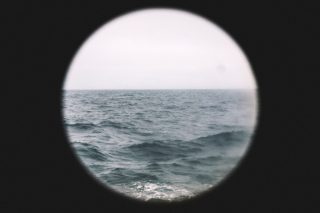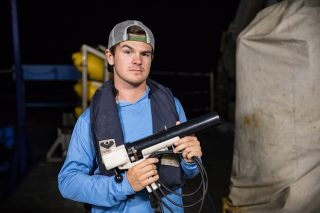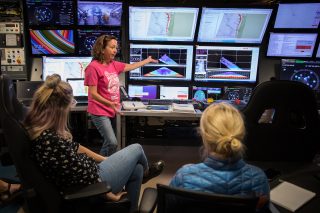The occupation of “explorer” has a storied past. Beginning with the spread of humankind from various sites in southern and east Africa roughly two million years ago, all the way up to modern ventures to the depths of our solar system and seas, humans and their ancestors have traveled in search of new lands. While these great explorations began for practical reasons – food, water, and other necessities of life – in the last few millennia they began to alter in their intent. Many modern explorers do not primarily seek the bare necessities; they are spurred on by inquiry of the unknown.

Doorways to New Worlds
In my own life, I have also been infatuated with the indefinite. From an early age I was curious of everything from what lied at the tops of the pines surrounding my house on the coast of Maine to what lurked under the pilings of my neighborhood dock. Exploration for me began as a romantic ideal. Every time I got to the top of a new mountain or thought I had found my own little secluded spot in the woods, I would find remnants of past travelers. I wanted more than anything to be a true pioneer, investigating landscapes and waterways that no person had ever documented before. However, there was one place I could always count on to provide me with marvelous discoveries, a place I would spend hours just observing. That place? You guessed it, the ocean.

The ocean and its many wonders have not only been the source of my research interests – from investigating the mysteries of the deep sea off the Exuma Sound in the Bahamas, to identifying new species of microorganisms off the coast of North Carolina – it has also been the cradle of much of my artistic ambitions. As long as I have had a camera in my hand, I have loved to photograph seascapes and the myriad creatures I plucked from the shores of the ocean. Yet it was not until I spent a summer interning on the southern cape of South Africa photographing great white sharks and other megafauna that I began to find a love for documenting life under the sea. This interest expanded to the minute with a course I took on invertebrate zoology at the Duke Marine Lab this past year where I was exposed to photography using cameras mounted on microscopes to document the taxonomy and anatomy of invertebrate ecosystems so small they are invisible to the naked human eye. All of this research and documentation had built in me a fervor for the ocean so strong that I knew without a doubt I wanted to spend time actually living at sea.

Making Waves
The expedition I am currently on aboard the R/V Falkor is the culmination of my 20 years on this big blue planet being obsessed with all things oceanic. It is still quite difficult for me to process that on this incredibly high tech floating chunk of iron I am aiding in data collection on swathes of the ocean that have never been observed by humans. As I write this blog, I am in the control room of the ship, mesmerized by the myriad screens in front of my face. I am watching in awe as the grey regions of our background map are illuminated with brilliant colors, each new line of pixels representing the visual interpretation of our multi-beam sonar gathering data. While it is a statistic repeated time and time again, it never fails to boggle my mind that we have more accurately mapped the surfaces of the Moon and Mars than we have our own seafloor. Mapping the minute details of the Cascadia Margin aboard this world class research vessel has been an experience I will never forget, but more than that it has already served as a source of inspiration for my marine science interests that I am confident will continue to stimulate my research and art for decades to come.

